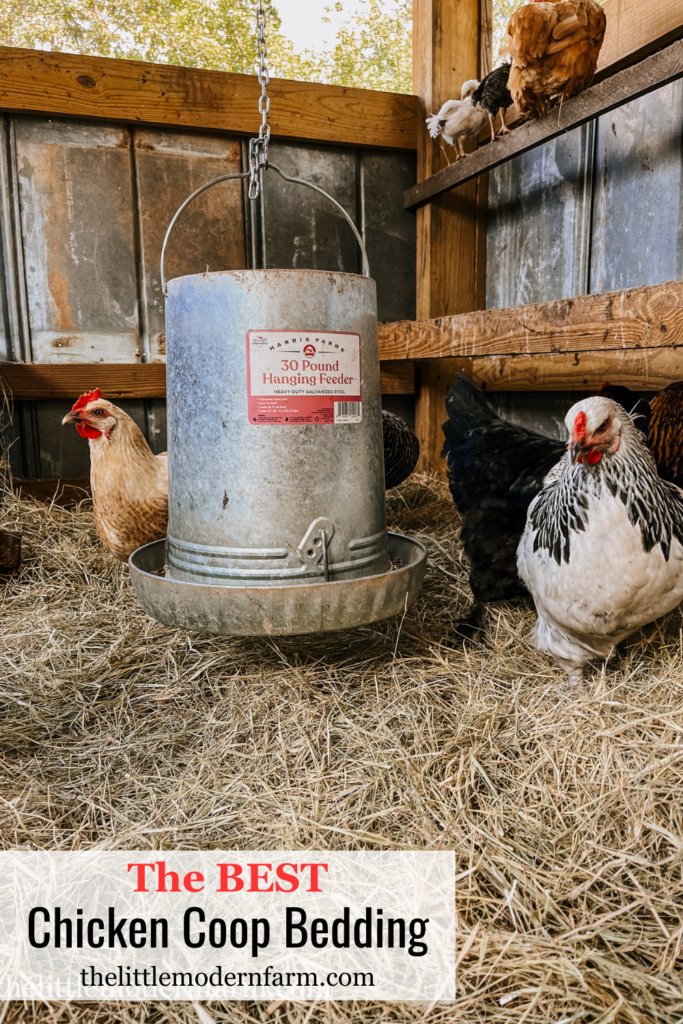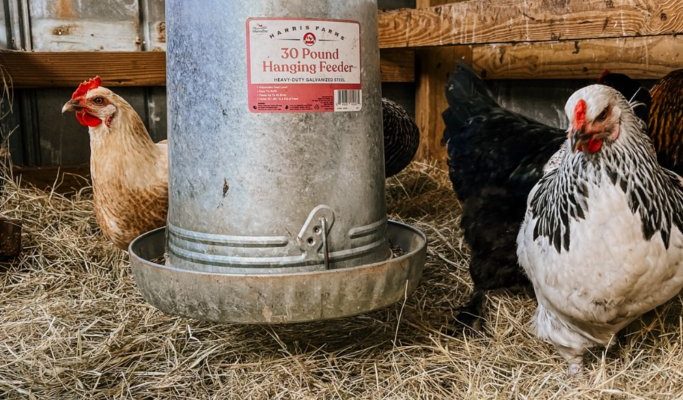
Now, you might be asking yourself, “What should I use for bedding?” The truth is, there are various materials, each with its pros and cons. Grab a cup of coffee, and let’s dive into the world of chicken coop bedding. You’ll find out what works best for your fluffy friends.
Why Bedding Matters in Chicken Coops
Before we jump into specific materials, let’s talk about why bedding is so crucial for your chickens. Bedding serves multiple purposes: it helps control odor, absorbs moisture, and provides insulation against temperature changes. Just like a good pair of socks keeps your feet warm, the right bedding keeps your chickens comfortable and healthy.
A clean, dry coop is less likely to harbor harmful bacteria and parasites, which can make your birds sick. Think of bedding as the first line of defense for your chickens. If you’re not using the right materials, it could lead to health issues that can be costly to treat. Keeping the coop environment clean with the right bedding not only promotes better health but can also lead to happier, more productive chickens.
1. Straw: The Classic Choice
Straw is a time-honored favorite among chicken keepers. It’s lightweight, easy to find, and great at insulating. Straw helps to absorb moisture but still allows for some air circulation, which is essential in preventing mold growth. Plus, it’s affordable, making it a go-to for many flock owners.
However, there are a few things to consider. Straw can sometimes harbor pests if it’s not stored correctly, and it can break down more quickly in a wet environment. But when managed properly, it provides a cozy, soft surface for your chickens to walk and lay eggs on.
Also, if you’re looking to create compost, straw breaks down nicely into an organic matter that enriches your garden soil. Just remember: it’s best to replace straw bedding regularly to keep things clean and healthy.
2. Wood Shavings: A Popular Alternative
Wood shavings are another popular option when it comes to chicken bedding. They’re made from various types of wood, such as pine, cedar, or aspen, and are excellent for absorbing moisture and controlling odor. Honestly, many chicken keepers swear by wood shavings for how easy they are to manage.
One of the major benefits of wood shavings is their ability to keep the coop smelling fresh. They break down over time, but you don’t need to replace them as often as straw. A good layer of shavings can create a comfortable environment for your chickens, making it easy for them to scratch around.
However, there are a couple of downsides to consider. Some types of wood, like cedar, can be harmful to chickens in large quantities due to their strong oils. It’s usually best to stick with pine or aspen. If you choose wood shavings, ensure you’re getting a safe type for your flock.
3. Pine Pellets: A Modern Option
Pine pellets are gaining popularity among chicken owners, and for good reason! They’re compressed wood that expands when wet, turning into sawdust that absorbs moisture and odor effectively. You might be wondering, “How does that work?” Well, the pellets break down into a fine material that’s easy to clean up.
Using pine pellets can dramatically reduce the smell in your coop, making it more pleasant for both you and your birds. They’re versatile and work well in both small and large coops. Plus, they’re less likely to harbor pests compared to straw, making them a great choice for those who worry about critters sneaking in.
On the flip side, they can be a bit more expensive than other options, and you’ll want to ensure you have adequate ventilation in the coop. If your chickens are used to softer bedding, it might take a little adjustment for them to get used to the pellets.
4. Sand: The Low-Maintenance Option
Believe it or not, sand can be a fantastic bedding option for chicken coops! It’s low-maintenance and helps keep your coop dry. Chickens love to scratch and dig in it, which can help with their natural behaviors. Plus, sand is great for dust bathing—something chickens really enjoy.
Choosing sand helps with odor control, as it doesn’t retain moisture as much as other bedding types. Just think of it as a giant kitty litter box for your chickens. You can easily scoop out droppings and dirty areas, which makes cleaning a breeze.
However, the main challenge with sand is ensuring it’s not too wet, as damp conditions can lead to mold. You’ll also want to check that the sand is fine and dust-free to avoid respiratory issues for your flock. If you can manage these aspects, sand can be a great addition to your coop.
5. Recycled Paper: Eco-Friendly and Safe
Recycled paper bedding options, like shredded paper or paper pellets, are eco-friendly and can be safe for your chickens. They’re made from recycled materials, which is a win for the environment. Plus, paper bedding is excellent at absorbing moisture and controlling odors.
Using recycled paper is particularly advantageous if you’re concerned about chemicals or additives found in some wood products. They tend to be softer on your chickens’ feet, offering a comfortable surface to walk on.
However, paper bedding can get heavy when wet, and you may need to replace it more frequently than other materials. If you opt for this type of bedding, it’s a good idea to mix it with another type, like straw or wood shavings, for better moisture management.
6. Hay: Nutritional and Cozy
Hay is another common bedding material, but it’s slightly different from straw. While straw is more about insulation, hay has more nutritional value, which can be beneficial for your chickens. If you’re looking for a cozy bedding option that your chickens might nibble on, hay can be a fun choice.
That said, hay can also attract pests and mold if not managed properly. It breaks down quickly, so you’ll likely need to replace it often. If you decide to use hay, be sure to mix it with a dryer material to help manage moisture and maintain cleanliness.
Choosing hay can be a bit of a balancing act. It’s lovely and soft for your chickens, but remember that it requires a commitment to keep it fresh and clean.
7. Coconut Coir: A Unique Alternative
Coconut coir is an up-and-coming option for chicken bedding. It’s made from the fibrous husks of coconuts and is surprisingly effective at absorbing moisture. Here’s the thing: it’s also biodegradable, making it an environmentally friendly choice.
Coir has excellent insulating properties, which can help keep your chickens warm in cooler months. Plus, it’s naturally resistant to mold and pests, so you won’t have to worry as much about those issues.
However, coconut coir can be a bit harder to find and may be more expensive than other options. If you can locate it, it can be an exciting way to add variety to your chicken coop bedding and is worth considering for its unique benefits.
Selecting the best bedding materials for chicken coops is a key part of keeping your flock happy and healthy. Each type of bedding has its strengths and weaknesses, so it’s essential to weigh your options based on your coop’s needs and your chickens’ preferences.
Whether you go for the classic straw, modern pine pellets, or the eco-friendly coconut coir, make sure that whatever you choose provides comfort, cleanliness, and a happy environment. After all, your chickens are counting on you to create a cozy home they’ll love!

